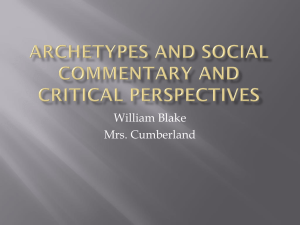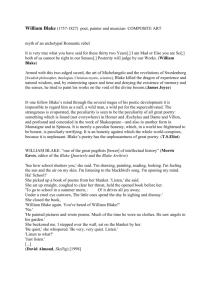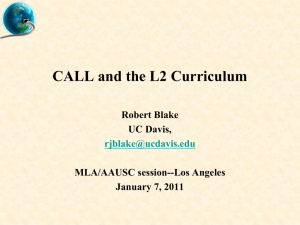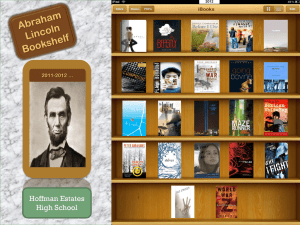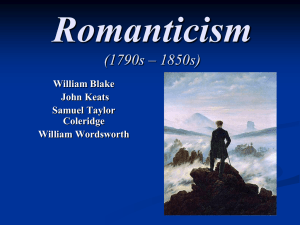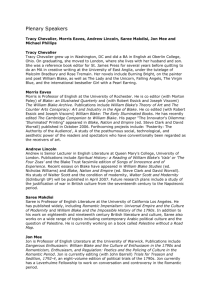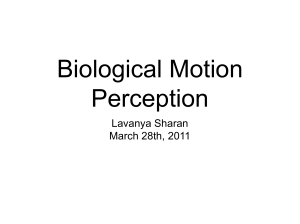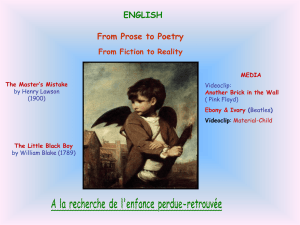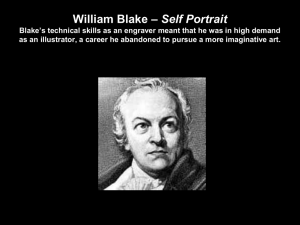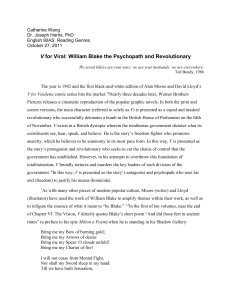Blake`s The Garden of Love and A Poison Tree
advertisement
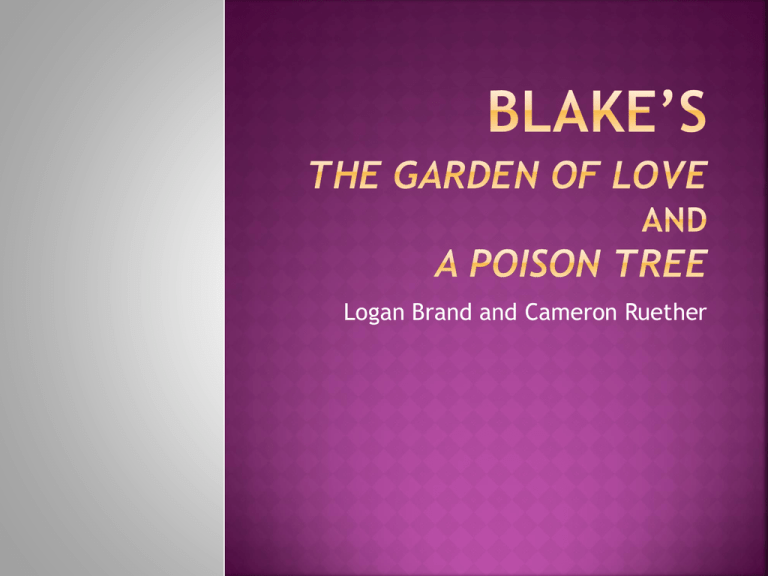
Logan Brand and Cameron Ruether Living in Britain, Blake wrote in one of the most liberal countries in Europe and the entire world. Despite this, England was still a very aristocratic society with a burgeoning middle class and an urban working class living in squalor. He lived in a politically charged age during which the French and American revolutions occurred, both of which were rebellions against monarchy. Although an initial supporter of the revolutions, Blake soon became disillusioned with them when he found that they had merely replaced monarchy with unrestrained mercantilism rather than remedying the abuses of class power. As a Dissenter, Blake was hostile towards the Church of England and the English monarchy, finding that both institutions used religious dogma and the claim of divine authority as a means of controlling the public. He was also disgusted by industrialism, specifically by how it treated workers as machinery and alienated them from their work. Such liberal ideas were widespread at the time as many intellectuals called for labour reform after witnessing how cruelly the working class was treated. Many of Blake’s Songs of Experience reflect his feelings towards the oppression of the working class. The more naturalistic elements of Blake’s ideals would pervade the arts during the Romantic era (Blake is often seen as a pre-Romantic poet for this reason). Allegorical Songs of Experience Symbolism used extensively Chapel Green Flowers Graves Priests Briars First Stanza Attempt at Love Shock at what has changed Second Realization of impact Reminiscent of past experiences Third Stanza Stanza Dreadful understanding Lifelong impact Anaphora And Internal Rhyme Imagery Chapel Green Death, loss. Priests Pleasure, relationships, love. Graves Innocence of youth. “play” Flowers Represents the Church and it’s role as a societal authority figure. Also represents it’s oppressive role. Interlopers, Interference. Briars Painful rules and restrictions. Other Blake rebelling against the church. Interpretations Clergy members are holier than common worshippers Blake relieving anger toward fatherly society Priests represented selfish, hypocritical, fatherly, etc. individuals http://123nonstop.com/pictures/Poison_Tree http://idolator.com/tag/poison http://idiotboard.blogspot.com/ First Stanza: here Blake compares anger with friends versus anger with foes. -Anaphora (I was…/I told…/I was…/I told…) Second Stanza: Blake frets and worries causing the anger to grow stronger -Metaphor The anger is treated as though it is a cultivated plant. Third Stanza: Blake’s anger continues to grow “Till it bore an apple bright.” -Symbolism/Allusion The Fruit of Knowledge (Biblical myth). Fourth Stanza: The foe creeps into the garden and presumable dies. -Symbolism The foe (assumedly) dies when he/she steals the apple (symbolizing knowledge of Blake’s anger). “A Poison Tree” appeared in Blake’s Songs of Experience (1794). This establishes that the poem will have a bitter message and tone. Blake’s techniques tend to be quite simple. (AABB CCDD EEFF GGHH) diction is almost entirely made up of mono- and disyllabic words, which is not unexpected for this poet. Bloom, Harold. William Blake. USA: Chelsea House Publishers, 1985. http://www.suite101.com/content/william-blakes-a-poison-treea63118 http://www.eliteskills.com/analysis_poetry/A_Poison_Tree_by_W illiam_Blake_analysis.php http://www.suite101.com/content/willilam-blakes-a-poisontree-a34108 http://www.novelguide.com/a/discover/pfs_0000_0024_0/pfs_0 000_0024_0_00023.html
